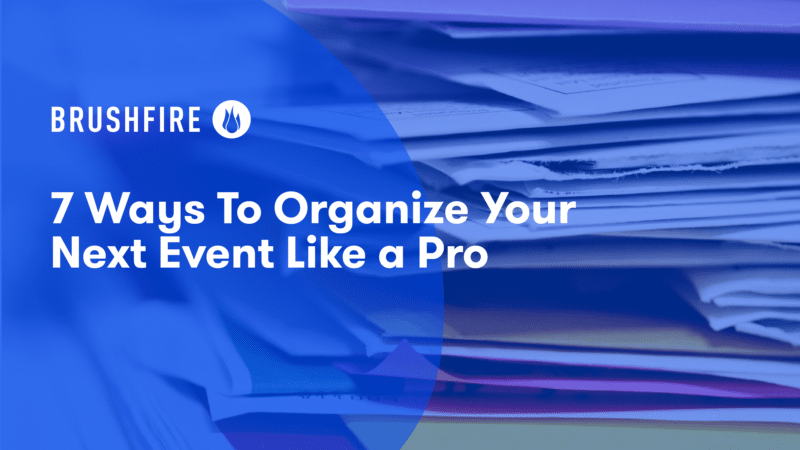Improve Your Church Events One Attendee at a Time
People First: Brushfrie’s partnership with churches for a better event experience.
Boost Engagement and Sign-Ups with Pop-Up Registration Forms

Are you tired of mediocre events that don’t really engage or impress your attendees? Are you overwhelmed with the task of managing the details and increasing registrations? It’s time to level up your event planning game, and we can help.
Event planning is a dynamic and exciting field, but staying on top of the latest trends and technologies can be a challenge. From managing vendors to creating engaging content, event planning requires a diverse skill set and powerful event registration tools.
Fortunately, we have some tips to help you master the art of event planning and stay ahead of the curve.
There are a lot of moving parts when running an event, and it’s important to start off on the right track. The seven things the professionals do to plan, organize, and manage events successfully are:
Let’s break these down:
1. Start with the goal in mind. As early as possible (and before any planning takes place), clearly define the objectives of your event. Establishing your goals helps you and your team get on the same page. This step also helps everyone stay focused and make decisions that align with the overall purpose.
2. Create a detailed plan. Once you have established your goals, create a strategy and timeline that includes deadlines, checkpoints, budgets, and a list of tasks to be completed. Always plan for worst-case scenarios with contingency plans so you are prepared for unexpected challenges.
3. Assign clear roles and responsibilities. To ensure that everything runs smoothly, give specific tasks and responsibilities to each team member. Detailing roles and workload expectations helps avoid confusion, ensuring everyone knows what is expected of them. Create a clear hierarchy so people know who they can go to with questions or concerns.
4. Choose the right venue. The space you choose should reflect the style and tone of your event. Consider factors such as location, size, and amenities to find the best fit. For example, too large of a venue will make your event feel detached or unfriendly, while too small of a space will make guests feel crowded.
5. Spread the word. Use a variety of ways to promote your event, including social media, email, and targeted advertising. Make sure to clearly communicate the value and benefits of attending. Make it easy for your guests to understand pricing and exactly what is included in each ticket type.
6. Embed the registration form on your site: Don’t make guests jump through extra hoops to sign up! Include a pop-up registration form on your website to help keep visitors on your page and encourage them to sign up for your event. Pop-up forms can also be a great way to capture email addresses for future marketing efforts.
7. Communicate early and often. Keep attendees informed throughout the planning process with regular updates on event details, such as speakers, schedule changes, and transportation options. Let guests know what they can expect by answering common questions about things like food, childcare, parking, and more. Regular updates and reminders will help your guests feel prepared and excited about your event.
Should you use an event registration tool to incorporate an embedded pop-up form on your website?
Pop-up registration forms make it easier for visitors to sign up for an event. Rather than navigating to a separate registration page, visitors simply see a form pop up when they click on an event button. This can lead to increased registration rates and help ensure that potential attendees don’t abandon the process due to a complicated registration process.
Plus, embedded registration forms can help keep visitors on your website for longer periods of time. By allowing visitors to register for an event without leaving your website, you increase the likelihood that they will continue browsing and engaging with other content on your site. This can lead to increased engagement, brand awareness, and conversion rates.
Finally, pop-up registration forms can help event planners gather valuable attendee data to help plan future events. By tracking registration and attendance rates, event planners can identify areas for improvement and make data-driven decisions about event planning strategies.
To learn more about why incorporating a pop-up registration form on your website is an effective way to improve event planning, check out this guide.